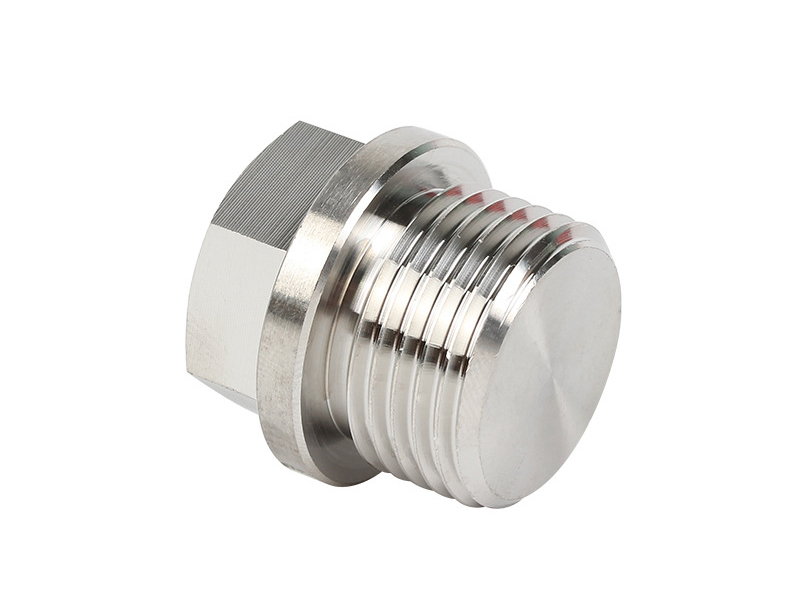CNC Turning of Aluminum Alloys for Lightweight Automotive Components
Introduction
The Automotive industry continuously strives to improve vehicle performance, efficiency, and environmental friendliness by adopting lightweight materials. Aluminum alloys, favored for their high strength-to-weight ratio, excellent corrosion resistance, and ease of machinability, have become essential in manufacturing lightweight automotive components such as suspension systems, drive shafts, and precision engine parts.
High-quality CNC turning services are crucial for fabricating complex aluminum parts accurately, ensuring stringent dimensional accuracy, optimal surface finishes, and consistent performance. CNC turning significantly enhances the durability and reliability of automotive components, contributing directly to vehicle efficiency and safety.
Aluminum Alloy Materials
Material Performance Comparison
Aluminum Alloy | Tensile Strength (MPa) | Yield Strength (MPa) | Density (g/cm³) | Typical Applications | Advantage |
|---|---|---|---|---|---|
310-350 | 275-310 | 2.70 | Suspension components, drive shafts | High strength, excellent machinability | |
510-540 | 450-480 | 2.81 | Structural components, performance parts | Exceptional strength-to-weight ratio, fatigue resistance | |
425-470 | 290-330 | 2.78 | Engine components, transmission parts | High fatigue resistance, good machinability | |
320-340 | 160-180 | 2.74 | Cast automotive components, housings | Excellent casting properties, reliable dimensional stability |
Material Selection Strategy
Selecting the right aluminum alloy for automotive components involves specific operational considerations:
For suspension and drivetrain components demanding high strength: Aluminum 6061-T6 offers reliable mechanical properties and ease of machining.
High-performance structural and safety-critical parts: Aluminum 7075 provides exceptional strength-to-weight characteristics.
Engine and transmission parts subjected to repetitive stress: Aluminum 2024 delivers excellent fatigue resistance and consistent performance.
Complex cast housings and intricate designs: Aluminum ADC12 (A380) is ideal for casting consistency and dimensional stability.
CNC Turning Processes
Process Performance Comparison
CNC Turning Technology | Dimensional Accuracy (mm) | Surface Roughness (Ra μm) | Complexity Level | Typical Applications | Key Advantages |
|---|---|---|---|---|---|
±0.005-0.015 | 0.4-0.8 | Very High | Precision engine parts, drive shafts | Excellent accuracy, consistent repeatability | |
±0.005-0.02 | 0.6-1.2 | Extremely High | Complex automotive fittings, suspension components | Complex geometry machining, reduced setups | |
±0.01 | 0.8-1.6 | High | General automotive brackets, connectors | Optimized aluminum-specific tooling, efficient machining | |
±0.002-0.01 | 0.2-0.4 | Very High | Precision valve bodies, sealing surfaces | Ultra-fine surface finish, tight dimensional control |
Process Selection Strategy
Choosing the appropriate CNC turning technology is based on complexity, precision requirements, and functional demands:
Standard aluminum automotive components: Aluminum CNC Machining provides efficiency through optimized tooling.
Highly complex, intricate components needing multiple-axis operations: Multi-Axis CNC Turning simplifies production and enhances precision.
Components demanding highest dimensional accuracy: Precision CNC Turning combined with CNC Grinding ensures optimal dimensional and surface quality for critical parts.
Surface Treatment
Surface Treatment Performance
Treatment Method | Corrosion Resistance | Wear Resistance | Temperature Stability (°C) | Typical Applications | Key Features |
|---|---|---|---|---|---|
Excellent (≥500 hrs ASTM B117) | Moderate-High | Up to 350 | Chassis parts, suspension brackets | Improved surface hardness, enhanced corrosion resistance | |
Excellent (≥500 hrs ASTM B117) | Moderate-High | Up to 200 | Housings, exterior parts | Durable finish, extensive color and aesthetic options | |
Superior (≥1000 hrs ASTM B117) | High (HV600-750) | Up to 400 | Engine components, precision gears | Uniform coating, exceptional wear and corrosion protection | |
Good (≥300 hrs ASTM B117) | Moderate | Up to 150 | Internal automotive components | Improved corrosion resistance, clean surface preparation |
Surface Treatment Selection
Selecting a suitable surface treatment enhances automotive aluminum components based on specific operational needs:
Critical chassis and suspension components: Anodizing offers increased hardness and long-term corrosion protection.
Exterior automotive components demanding aesthetic durability: Powder Coating provides attractive finishes and robust surface protection.
Engine parts and precision gears requiring exceptional wear resistance: Electroless Nickel Plating ensures outstanding durability and uniform protection.
General internal automotive parts: Passivation improves surface cleanliness and corrosion resistance.
Quality Control
Quality Control Procedures
Precise dimensional inspections utilizing Coordinate Measuring Machines (CMM).
Surface roughness verification with precision profilometry.
Mechanical property testing (tensile, yield strength) aligned with ASTM and automotive industry standards.
Non-destructive testing (NDT), including ultrasonic testing (UT), radiographic inspection (RT), and visual inspections for structural integrity.
Corrosion resistance evaluations via standardized salt spray testing (ASTM B117).
Comprehensive documentation complying with automotive quality standards (IATF 16949, ISO 9001), ensuring traceability and consistent quality control.
Industry Applications
CNC-Turned Aluminum Applications
Lightweight suspension components and structural supports.
Precision drivetrain and transmission components.
Engine components, including valve bodies, housings, and mounts.
Complex castings and connector housings for automotive assemblies.
Related FAQs:
Why are aluminum alloys essential for lightweight automotive component manufacturing?
How does CNC turning enhance precision in aluminum automotive parts?
Which aluminum alloy provides the best performance for structural automotive components?
What surface treatments are recommended for CNC-turned aluminum automotive parts?
What quality standards must CNC-turned automotive aluminum components adhere to?

